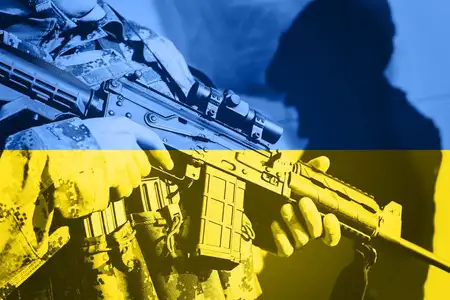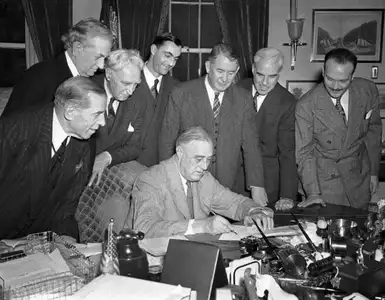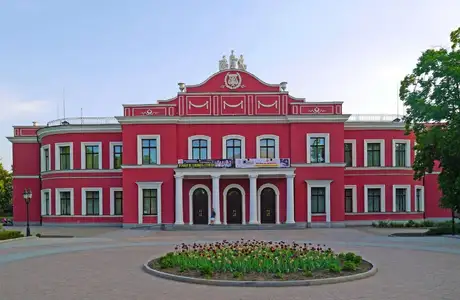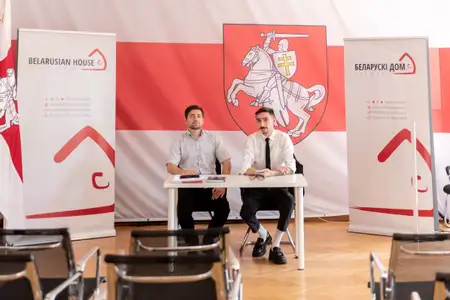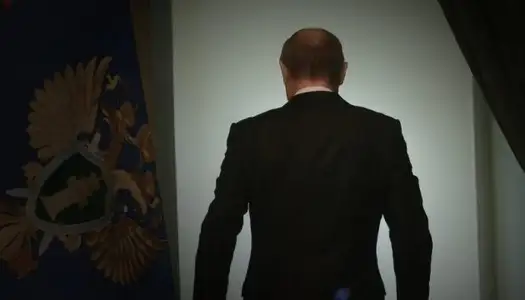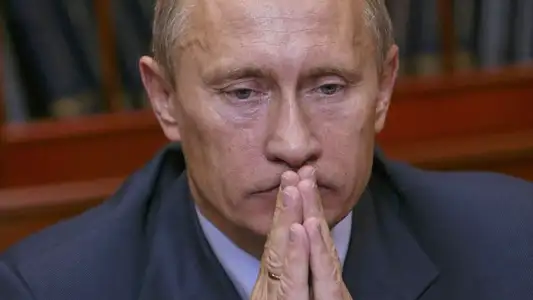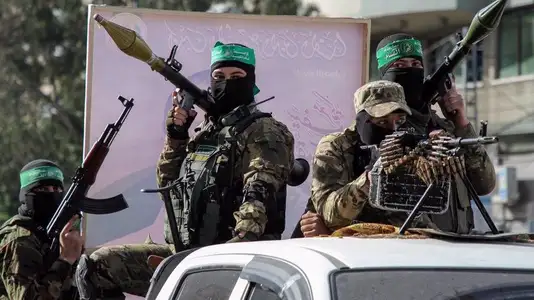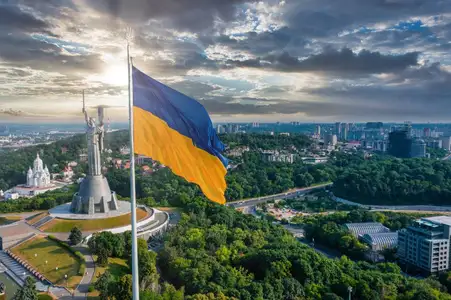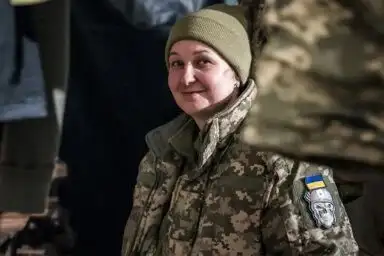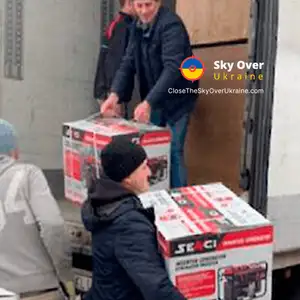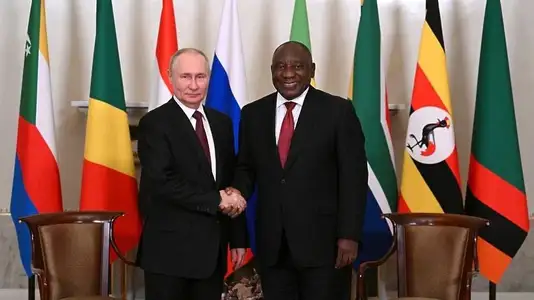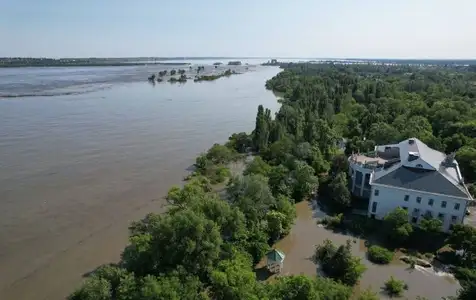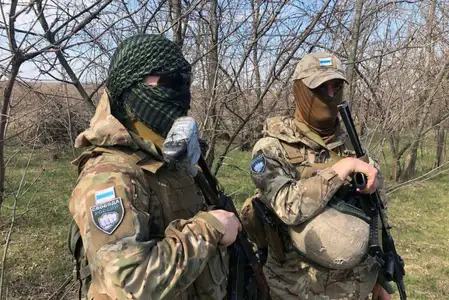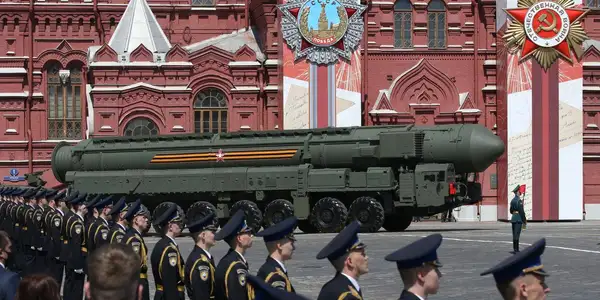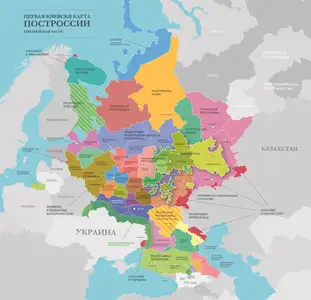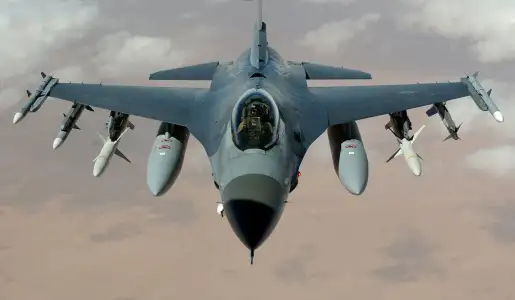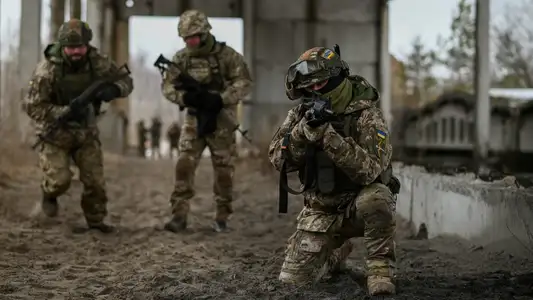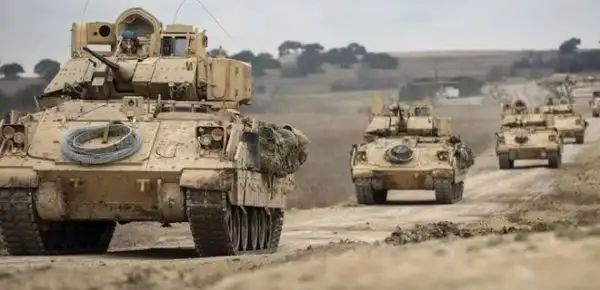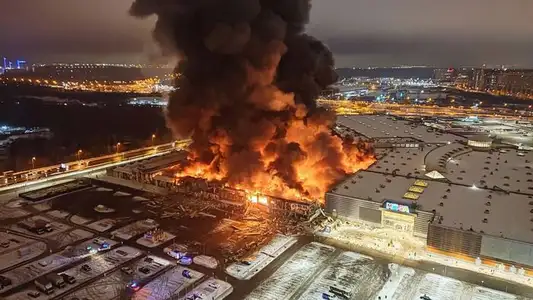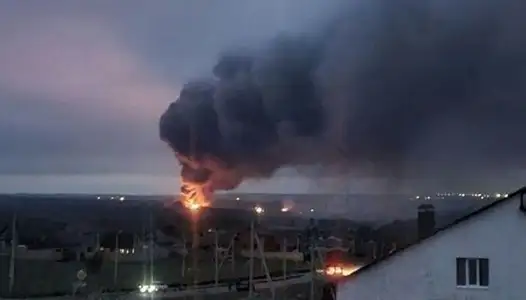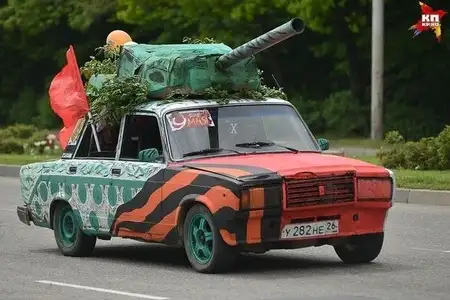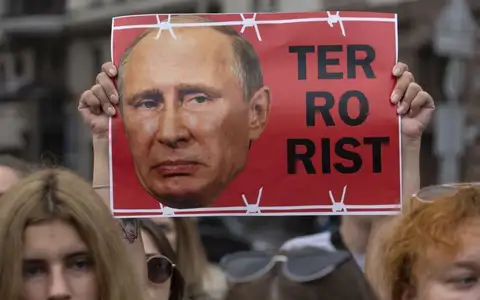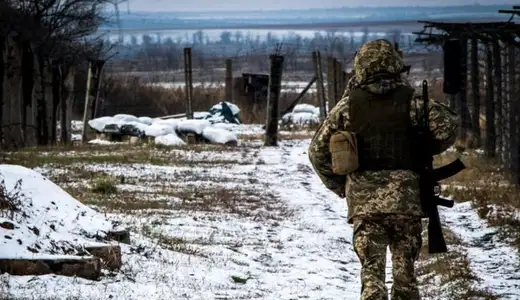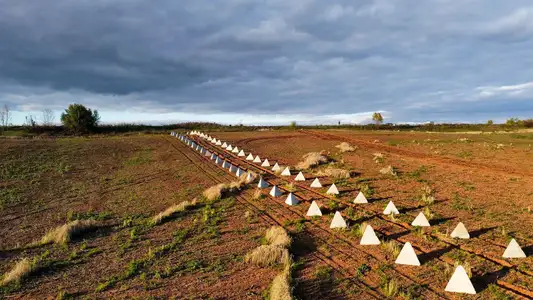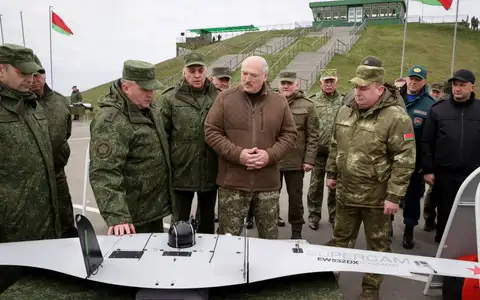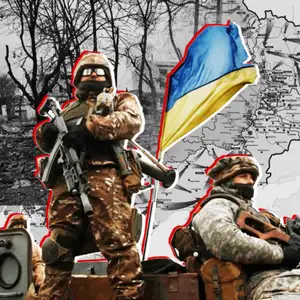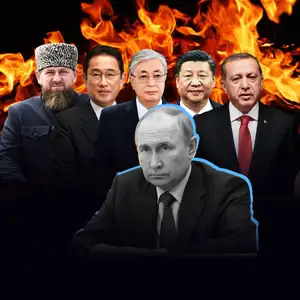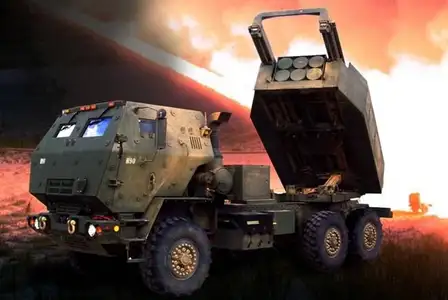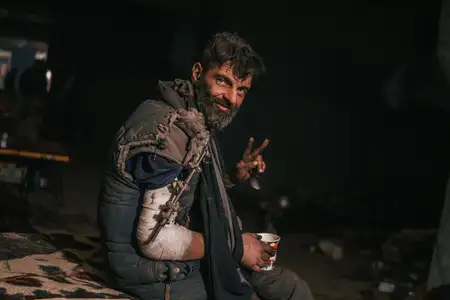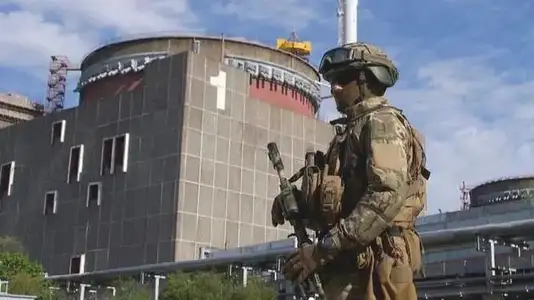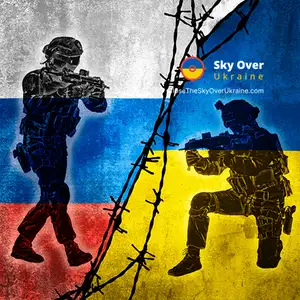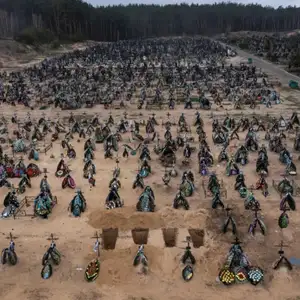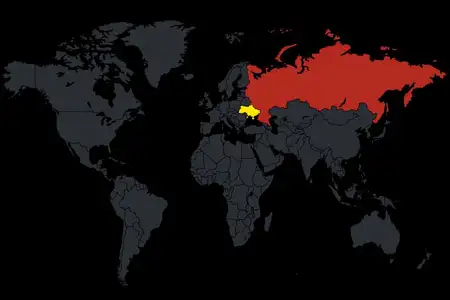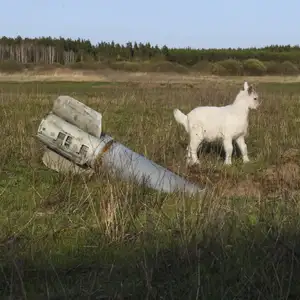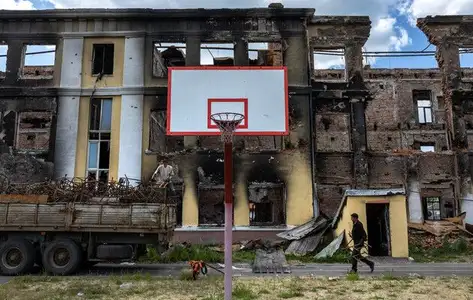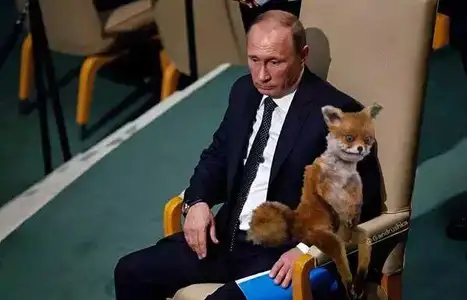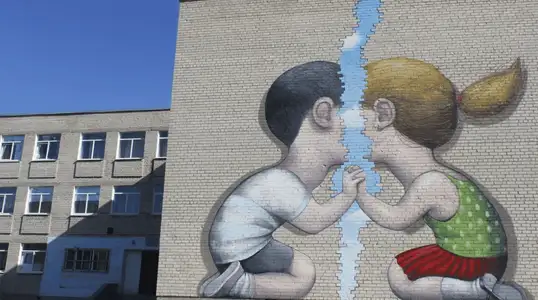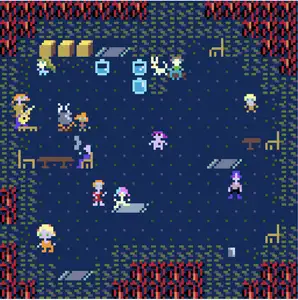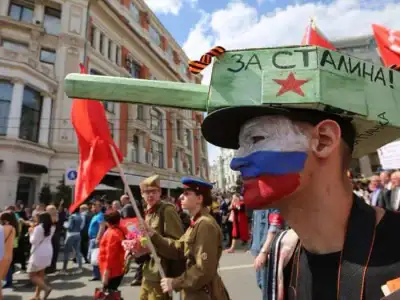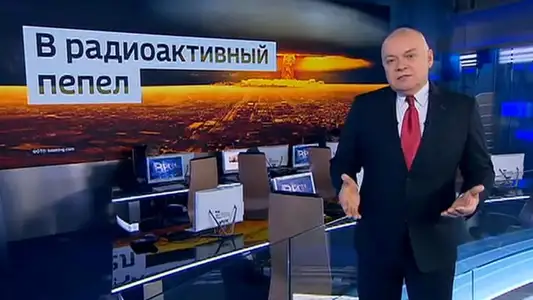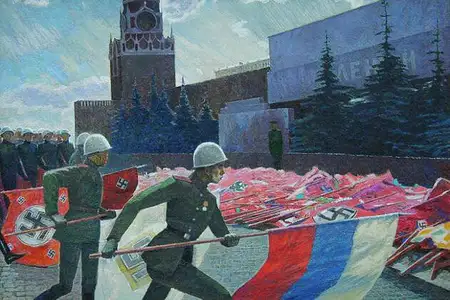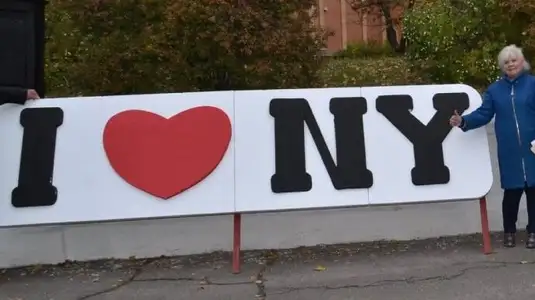Bakhmut: a fortress that both Ukrainians and Russians need
The city of Bakhmut in the Donetsk region is now familiar to everybody, as since December the area has been the hottest point on the Ukrainian fronts.
Despite the fact that the situation near Bakhmut has long been called critical and Western officials are advising Kyiv to withdraw troops from this sector, the AFU continues to hold it heroically for many weeks in a row.
Will the Ukrainian army retreat or will it be able to hold this small town, which has already become not just a fortress, but a symbol? And what is its special value for both sides?
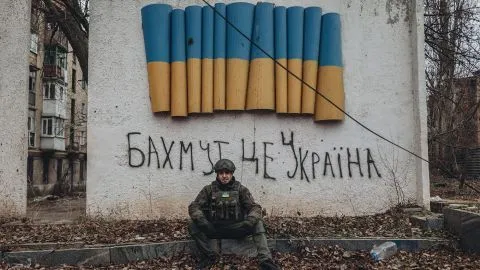
The inscription reads: “Bakhmut is Ukraine”
Bakhmut as a Ukrainian symbol of the Donbas
The city of Bakhmut is located in the northeast of the Donetsk region, with a population of over 73,000 citizens as of 2020. Before the Russian invasion in 2022, the city was the center of Ukraine's salt industry and an important railroad junction.
Bakhmut district borders with the Lugansk region. The southern border of the district runs along the line of contact between the territories controlled by Ukraine and the temporarily occupied territories, which are controlled by the Russian Federation and are administered by the so-called “Donetsk People's Republic” (DPR).
The history of Bakhmut stands out in an interesting way from most other industrial cities in the Donbas. Bakhmut, as a full-fledged settlement, was founded by Cossacks of the Izyum Regiment at the end of the 17th century. Although already in 1571, a guard-fort (storozha) named after the nearby Bakhmutka River was known, so it is 1571 that is considered the year of the settlement.
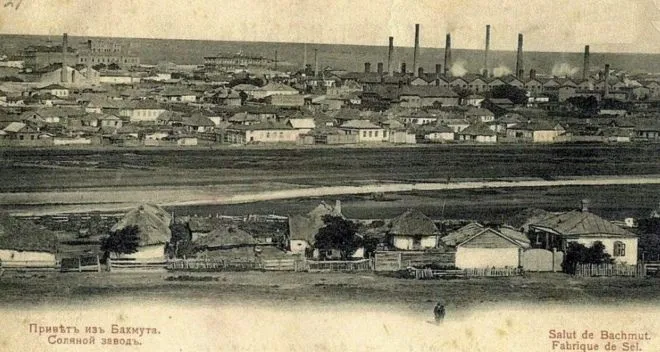
City of Bakhmut about 100 years ago
In the 17-18th centuries, Bakhmut became a major center of salting, in 1715 the saltworks started working there. In 1721 deposits of coal were discovered near the city. Since 1870s in the vicinity of Bakhmut began to develop deposits of clay and gypsum.
As an important industrial center of the Russian Empire at the time, this city was the center of Ukrainian life in the region in the late 19th and early 20th centuries. Moreover, it was the center of all of the Donbas. At that time Yuzivka, which later became Donetsk, was considered an ordinary town of Bakhmut district (the district occupied most of the modern north of the Donetsk region). All administrative and business centers of that time were based in the district capital, Bakhmut. Donetsk became a regional center later. Before that everything in the Donbas revolved around Bakhmut...

City of Bakhmut about 100 years ago
Now the most important events of the Russian-Ukrainian war of the early 21st century are also revolving around Bakhmut. So, we can say that Bakhmut has a symbolic meaning for Ukraine not only in today's time dimension, but also in the historical perspective.
By the way, the Russians fundamentally call Bakhmut ‘Artemovskovsk’, which was the name of the city in the Soviet period. In the course of de-communization in 2016, it got its historical name back. Which is also very symbolic for us, Ukrainians.
Fighting for the fortress of Bakhmut
When the Russian-Ukrainian war began in 2014, Bakhmut was captured for several months by the Russian-backed separatist of the “DPR”. On July 4, the city was liberated and has been in the Ukrainian rear ever since, although there has been occasional shelling of the city.
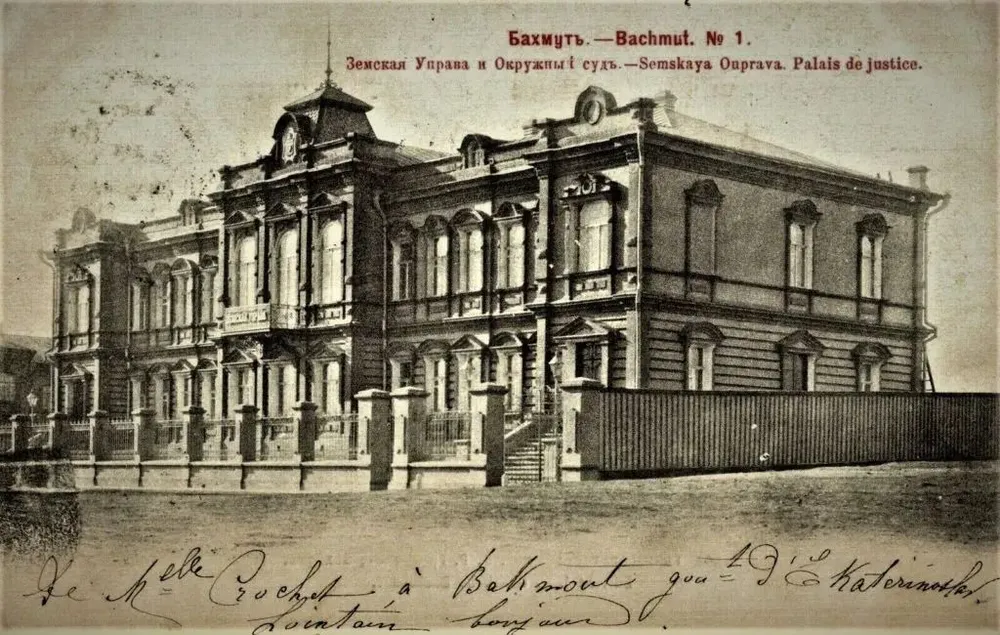
Historical building of the former Regional administration office, early 20th century
This changed after the full-scale invasion in early 2022. Beginning in May, Russian forces began actively shelling the city. Of the 73,000 residents of Bakhmut before the full-scale war, less than 20,000 remained in the city by May 2022, thanks to which a large number of casualties was avoided. At present, 6-7 thousand inhabitants remain in the city.
After fighting for Sievierodonetsk and Lysychansk in the summer of 2022, Russian forces seized almost all of the Luhansk region, and the battlefield shifted toward the cities of Bakhmut and Soledar, where Ukrainian forces significantly strengthened their positions after withdrawing from the Luhansk region.
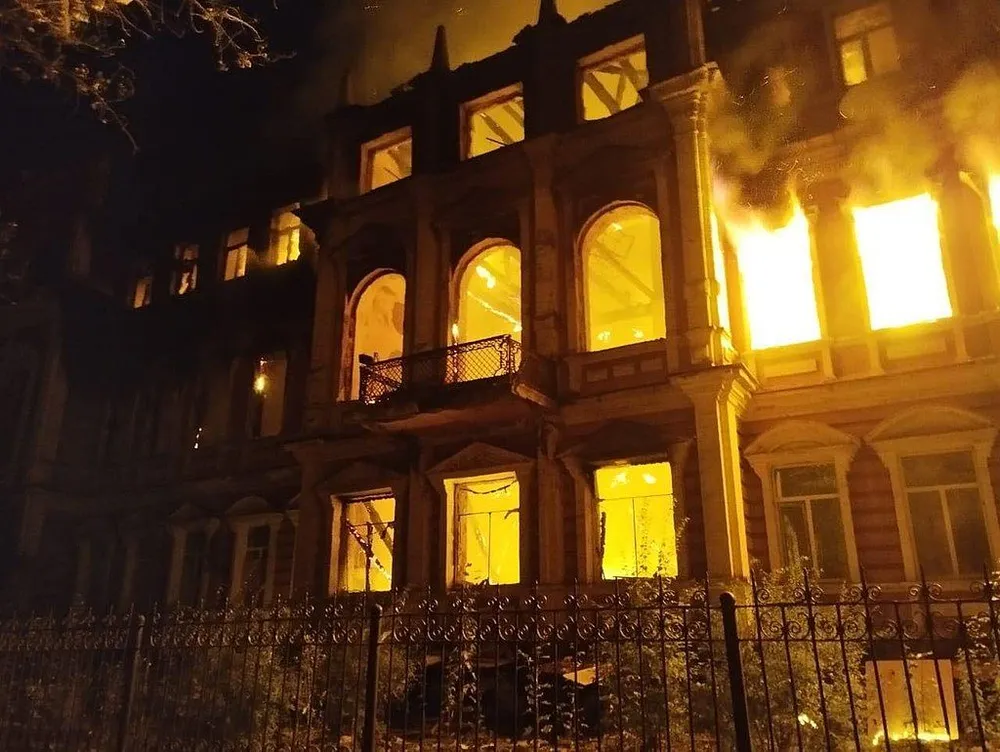
The above shown historical building destroyed by Russian shelling
Over the summer, Russian forces were able to advance about 10 kilometers deep into Ukrainian positions and gained a foothold about 13 kilometers from the city. They clearly wanted pincer the city by encircling it from the north and south. By the end of August, however, the fighting came to nought.
Active hostilities resumed in November and December. In early December, Russian troops came close to the city, in particular, they took control of several villages near the city.
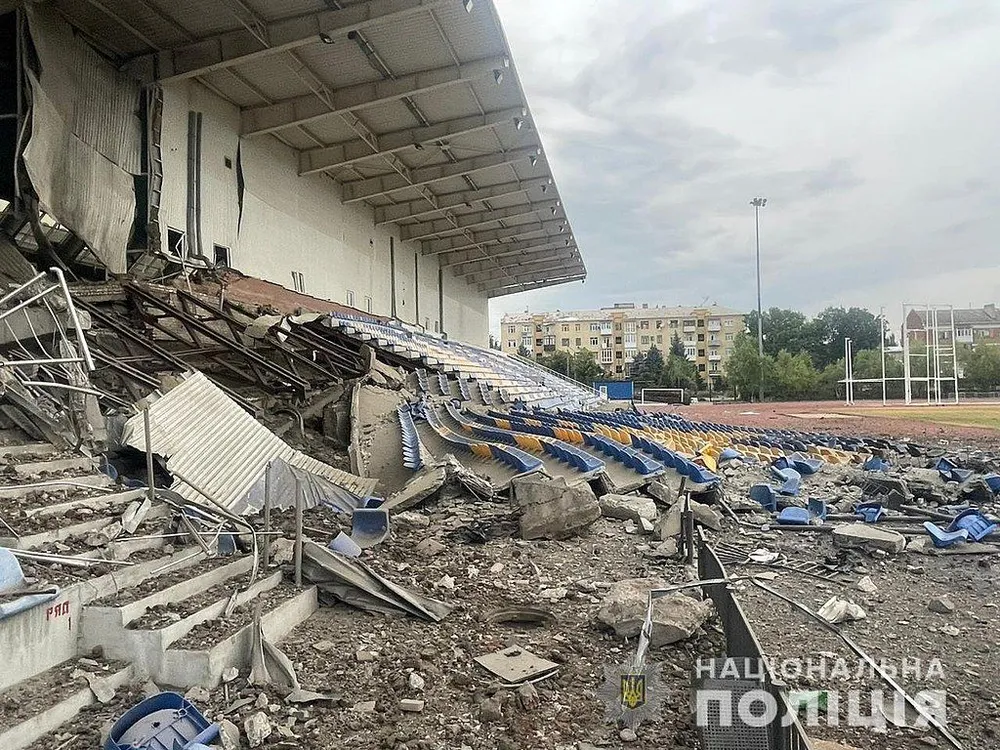
Bakhmut stadium destroyed by Russian shelling
On December 9, Ukrainian President Volodymyr Zelensky accused Russia of destroying Bakhmut, calling it “another Donbas city that the Russian army turned into burnt-out ruins”. Local authorities reported in late December that the city was destroyed for more than 60 percent.
And on December 20-21, Zelensky visited Bakhmut, met with fighters, awarded them medals, and hold speeches. The president called the city the “fortress of the fighting spirit” of the Ukrainians. And the next day he brought the battle flag from the city to Washington and compared it to the Battle of Saratoga, the decisive battle of the Saratoga campaign of the American War of Independence in 1777.
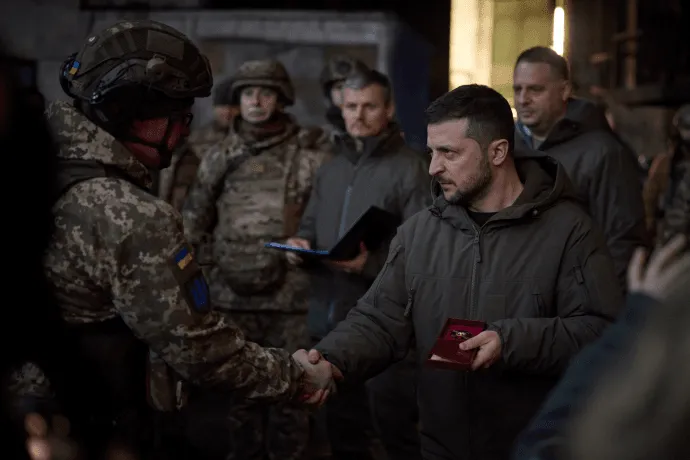
President Zelensky visited Bakhmut on December 20-21, 2022
On January 16, the AFU was forced to abandon Soledar, a small town, the control of which was associated with the possibility of holding Bakhmut itself. However, as we can see, Bakhmut is still holding.
Journalists rarely manage to get to Bakhmut; today the town is de facto under siege. It is possible to enter and leave it only through numerous checkpoints; humanitarian aid is still being delivered, and stores have long been out of operation. Videos published on the Internet show the level of destruction: dozens of private and apartment buildings have been damaged and administrative buildings shattered. Of the city's 16 schools, only one survived.
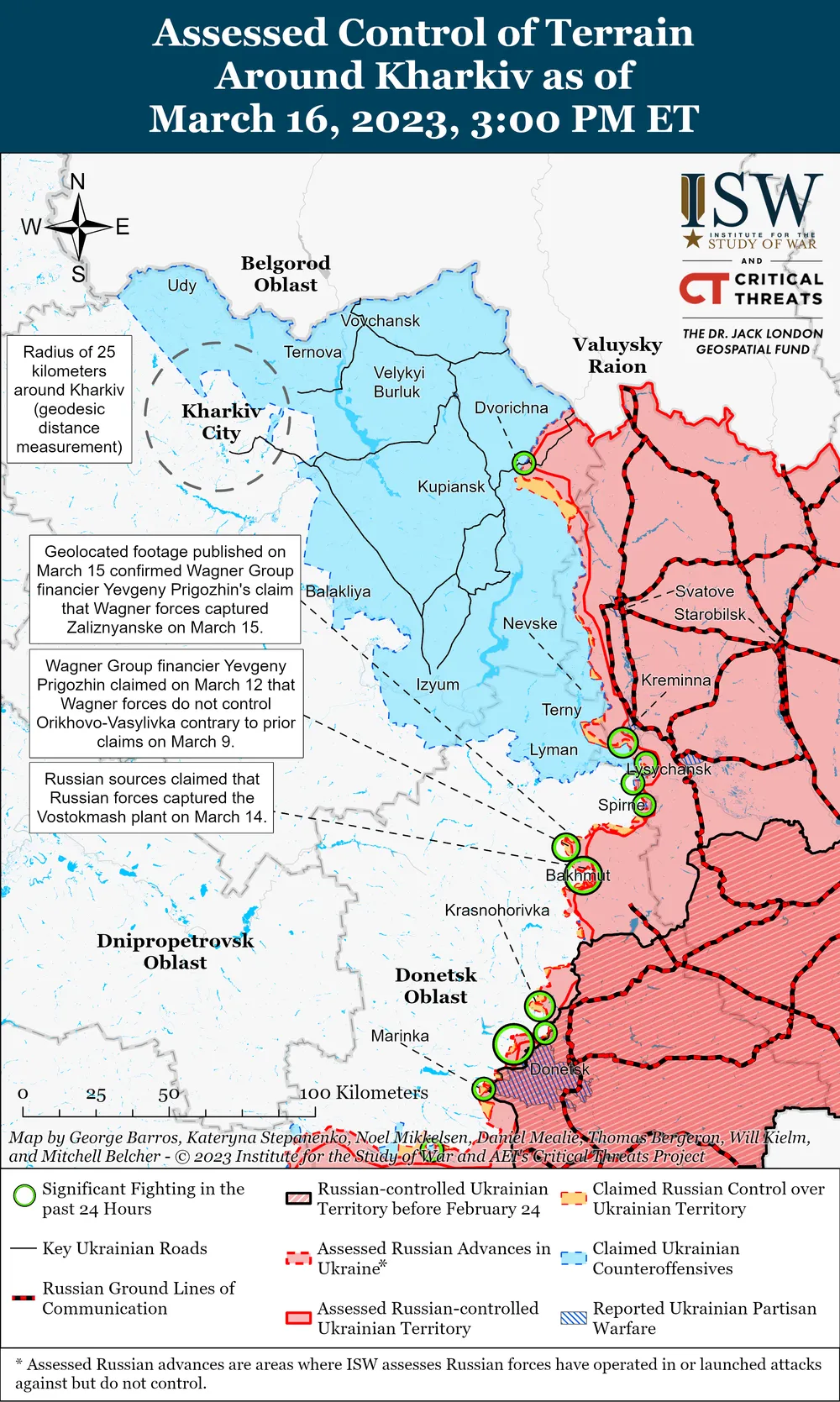
Situation around Bakhmut as for now (ISW)
Why do both parties persist so much?
Obviously, because Bakhmut is of big strategic importance to both the Armed Forces of Ukraine (AFU) and the Russian army.
From Bakhmut the road to Sloviansk and Kramatorsk runs, which are half a hundred kilometers to the northwest and are now the mainstay of the Ukrainian army in the region. In addition, Bakhmut is a very important transport hub for the AFU. Bakhmut is the point from which a large network of roads begins for potential counteroffensives toward Lysychansk and Sievierodonetsk. If Ukrainian forces lose control of the city, it would significantly disrupt their logistics, and it would be very difficult to recapture it, let alone to start a counteroffensive in that direction.
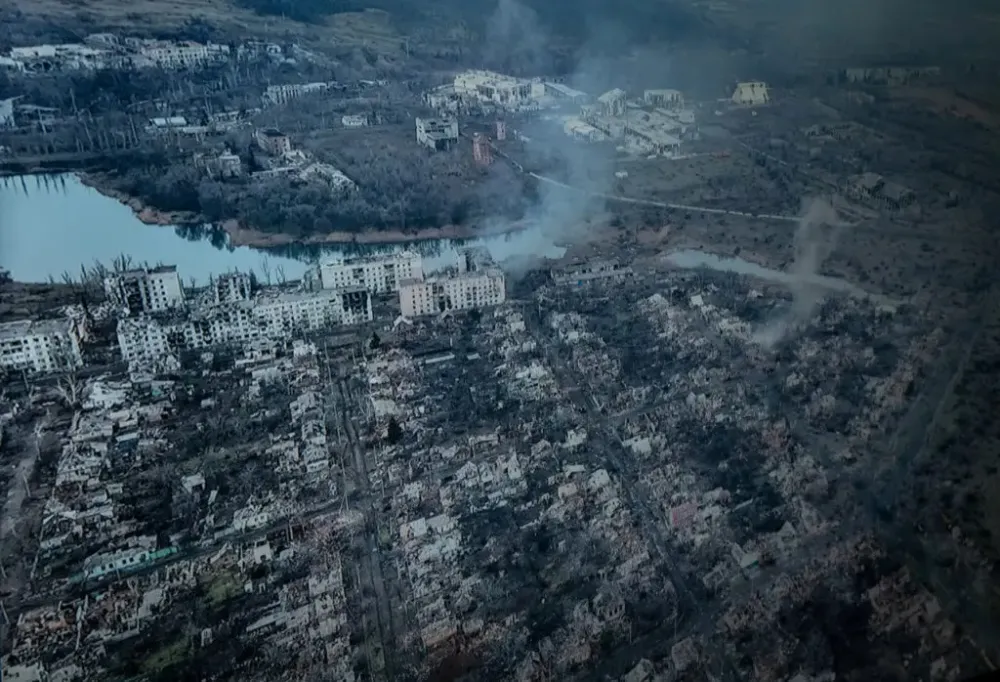
Destroyed city of Bakhmut, eastern part
For Russia, Bakhmut is especially important for several reasons:
- Symbolic significance: the Russian armed forces' desire to rehabilitate themselves after the retreats in the Kharkiv region (in September) and Kherson (in November). The Russian leadership again urgently needs to “sell” its population some kind of victory that would justify the truly enormous losses. And Bakhmut is the most suitable object for this purpose. After all, for Russia, this is the only sector of the front where it has been able to show at least some progress since the beginning of its “big” offensive.
- Political motives: The “Donetsk Republic” which the Russian Federation has proclaimed to be a part of its territory, needs “reach” the administrative borders. Otherwise, it turns out that after so many months of bloody fighting, the Russian army isn’t able to conquer the entire Donetsk region, let alone others!
- Applied aspect: Capturing Bakhmut would be a big plus for the logistics of Russian troops. They would not only be able to use the railroad in this sector, but also secure another important logistical hub – the occupied city of Debaltseve, which is 40 km from Bakhmut. As long as Ukrainian forces hold Bakhmut, they are able to “reach” Debaltseve with HIMARS.
- Finally, in the military point of view, capture of Bakhmut could open for the Russian armed forces the way for an offensive against the Kramatorsk agglomeration, a powerful stronghold of the Ukrainian army. In the meantime, the Ukrainian fortress of Bakhmut is a pain in Russians’ neck, preventing them from advancing further.
In addition, as observers note, it makes it more difficult for the aggressor to advance west of Kreminna (Luhansk region). In order to achieve results in that direction, Russians needs to dislodge Ukrainian units from the Siversk – Bilohorivka area. And the Russians are simply unable to do this because the most combat-ready troops are bogged down in the battle for Bakhmut.

Bakhmut City Children's and Youth Center after Russian shelling
Thus, for the AFU, Bakhmut is also an opportunity to deter Russian troops from advancing in other directions, not to mention opening a second front (for example, from the south or from Belarus). And while the aggressor is clinging to this small, almost ruined city, the Ukrainian army is preparing for its own offensive campaign. So, the Bakhmut operation allows the Ukrainian Armed Forces to gain time, the most valuable resource in this war.
The Bakhmut meat grinder: who is grinding whom?
Knowing the strategic importance of Bakhmut to both parties, it becomes clear why they continue to fight so hard for it. Bakhmut will surely go down in the history of this war as one of the bloodiest battles (if not the bloodiest).
It is not for nothing that the media sometimes call Bakhmut the “Ukrainian Verdun” referring to one of the bloodiest battles of World War I, a textbook example of a war of attrition. Russian propagandists, on the other hand, compare Bakhmut to the Battle of Stalingrad during World War II.

Situation around Bakhmut as of March 16 (ISW)
“Meat grinder” is indeed a fitting metaphor. Both sides are suffering heavy losses, but on the Russian side they are many times greater. First, traditionally the advancing side always has higher losses (3-4 times higher). Second, the Russians, in fact, cannot show a significant technological advantage and continue to “pelt” Ukrainian positions with their “cannon fodder”.
The main combat core of the Russians – Wagner PMC mercenaries, staffed by Russian prisoners – use the tactics of assault waves supported by aviation and artillery. Infantry groups one after another attack the AFU positions: one is liquidated and the next one comes. And in the end, some manage to penetrate the Ukrainian defense. These tactics help the PMC to achieve at least some momentum, but the scale of Russian losses is not comparable to their territorial gains.
“It is always easier for the defensive than for the offensive. As a rule, the offensive troops have 3-5 times greater losses. And given the tactics used by the Russians, especially the Wagner PMC, they have even more. This is one of the factors for which we need to hold the defense: to 'grind' and bleed the enemy, knocking out his physical capabilities for further attacks and reduce his moral potential,” the speaker of the Eastern Group of Forces of the AFU Serhiy Cherevaty noted.

A destroyed bridge
Weakening Russian troops is one of the most important tasks for the AFU in this area. Western officials told The Guardian that losses of the Wagnerians near Bakhmut may amount to up to 30,000 people. But Putin has long made it clear that he does not care about the number of human losses for the sake of achieving his own goal.
At the same time, military experts emphasize that this section of the front is probably where the first time since the beginning of the war a parity in firepower has been established – previously the Ukrainian artillery has always been losing in mass and number of shells.
Is it worth it to hold Bakhmut any longer?
Apparently, the Russians' plan at the moment is to cut off the routes that can be used to supply the defending Ukrainian units, while simultaneously storming the city head-on. According to British intelligence, as of March 11, Wagner PMC fighters had already taken control of most of the eastern part of Bakhmut. The line of demarcation actually runs along the Bakhmutka River – the bridges for crossing have been destroyed by the Ukrainian army. However, it is premature to speak of an operational encirclement of Bakhmut, as long as it is possible to deliver reserves, supplies and weapons there.
For now, President Volodymyr Zelensky ordered to send reinforcements to Bakhmut. According to him, the Ukrainian military leadership is unanimous in the need to continue defending the city.
Nevertheless, some Western officials doubt the strategic value of Bakhmut and believe that Ukraine is better off saving its troops, which are also suffering significant losses, for a future counteratta. Some of them advise Ukraine to retreat to new lines, as reported by reputable U.S. media.
U.S. Defense Secretary Lloyd Austin said last week that the withdrawal of the Ukrainian army from that city would not globally affect the course of the conflict. According to him, the fighting for Bakhmut is more of a symbolic than strategic and operational significance.
But at the 10th Rumstein meeting on March 15, Austin said at a briefing that the United States supports Ukrainian President Volodymyr Zelensky's decisions on the defense of Bakhmut.
“The Ukrainians have done something extraordinary in the area of Bakhmut. The Russians have wanted to seize this city for seven months, but have not had any success there thanks to the efforts of the Ukrainian Armed Forces,” he said. “It is up to them (Ukrainians - ed.) to decide where to stay and how long to defend. It's up to them, not us.”
Given the intensification of Western arms deliveries to Ukraine and the large number of public reports of Ukrainian military training, the Ukrainian Armed Forces, together with Western partners, are actively preparing for a new counteroffensive in the spring or summer. And Bakhmut plays an important role in this concept, as we have seen above.

Ukrainian military in Bakhmut. The inscription reads: “Bakhmut loves Ukraine”
We can assume that in any development around Bakhmut, Ukraine will benefit more or less. Even if the Ukrainian army has to withdraw from the city, they will retreat only a few kilometers to the heights, where the next line of defense has already been equipped. And for the Russians, the capture of the city will not necessarily be a guarantee of further success. On the contrary, it may become a Pyrrhic victory, after which, subject to successful actions of the AFU, the Russians may not be able to move and attack anywhere.
In February, Zelensky stated that Ukrainian troops would continue to defend Bakhmut, but “not at any cost”. And since the Ukrainian commanders have decided to hold this city, it means they still see opportunities to do so.
The Ukrainian defenders know what they are fighting for at Bakhmut, and they will hold it for as long as it takes. And our task is to support them as much as possible in any scenario.
Anastasiya Glotova

